Resonance Tube
SED 695B; Fall 2005
Principles illustrated:
- Resonance of a closed end tube
- Speed of sound
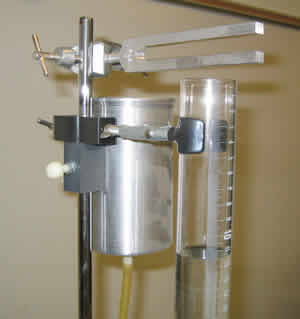

Standards addressed:
California High School Physics Standards:
- Waves have characteristic properties that do not depend on the type of wave. As a basis for understanding this concept:
- Students know how to solve problems involving wavelength, frequency, and wave speed.
- Students know sound is a longitudinal wave whose speed depends on the properties of the medium in which it propagates.
- Resonance tube
- 1000mL beaker
- 512Hz tuning fork
- Water (Deionized preferred)
A closed end tube resonates if the length of the tube is 1/4 the wavelength of the sound. It also resonates if the wavelength is 3/4, 5/4, and 7/4 wavelength long
The resonance tube gives an easy way to vary the length of the closed tube. The water column in a glass tube acts as a piston to maintain a column of air of the desired length. The length can be altered simply by moving the reservoir up and down to the desired height. The graduations on the tube allow direct reading of the length of the closed end tube.
This tube can be used to determine the speed of sound in air. Since you know the frequency of the tuning fork and can measure the resonant length of the tube, you can use the formula
![]()
to determine the speed of sound.
You can also use the tube to illustrate that a closed end tube only resonates on the odd harmonics. This is why you see a resonance when the column is 1/4 wave long and 3/4 wave long, but not at 1/2 wave.
Procedure:
- Set the tube up as shown in the photos.
Be sure that the zero mark of the scale is at the top of the tube.
Note that the ring stand isn't tall enough to place the glass tube over a table with room for the tuning fork at the top. You have to hang the tube off the edge of the table.
Place the tube clamps as far apart as possible to secure the tube without interfering with the motion of the bucket.
You may want to better secure the ring stand base by putting a weight on it. - Place the aluminum can as low as it can go.
- Slowly fill the can with water to about a cm below the top.
DI water will prevent water spotting of the glass tube.
You might want to put some food coloring in the water to make it more visible - Strike the tuning fork and raise the aluminum reservoir. The level of the water in the tube will slowly rise.
- You may need to strike the tuning fork again to keep it sounding as the water column rises.
- Listen carefully to the sound. As the air column reaches the resonant length, the sound will get markedly louder.
- You should hear resonances as the column gets near 80cm, 48cm, and 16cm.
These lengths correspond to 5/4, 3/4, and 1/4 wavelength at 1000Hz. - There may be some variation from the theoretical values of column lengths due to end effects., particularly at the 1/4 wavelength position.

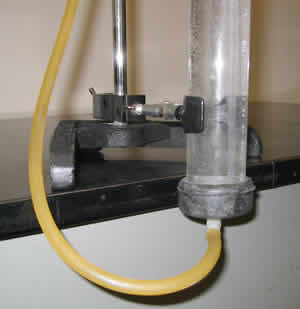
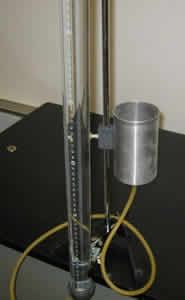
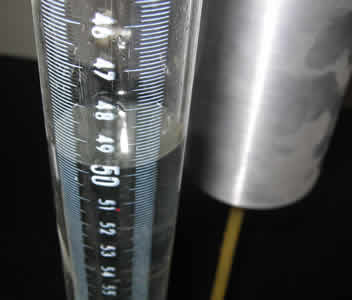
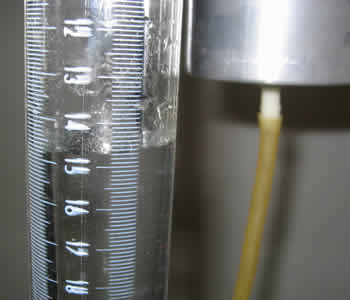
References & Links:
Another explanation of this apparatus
Google search for "Resonance Tube"